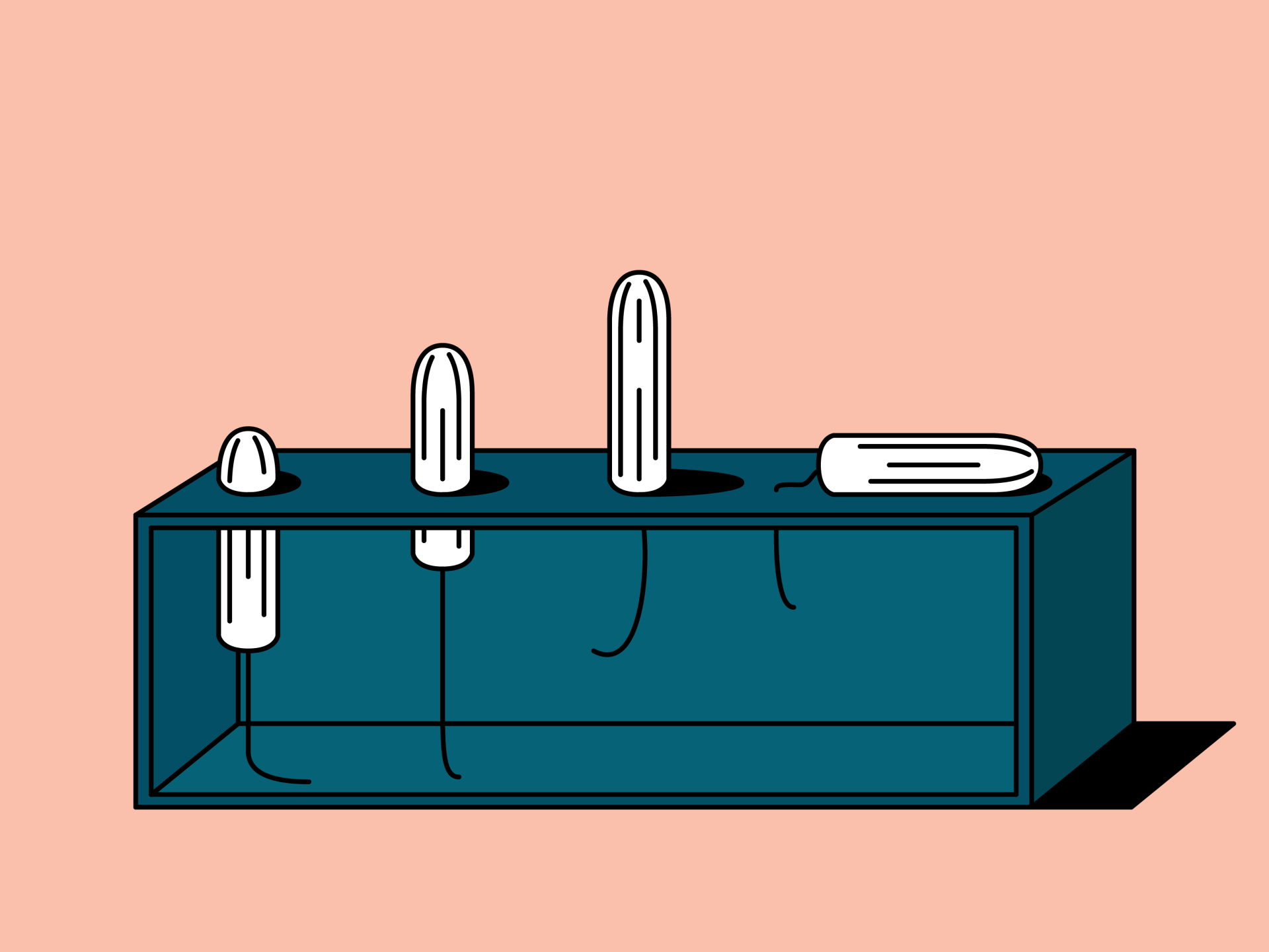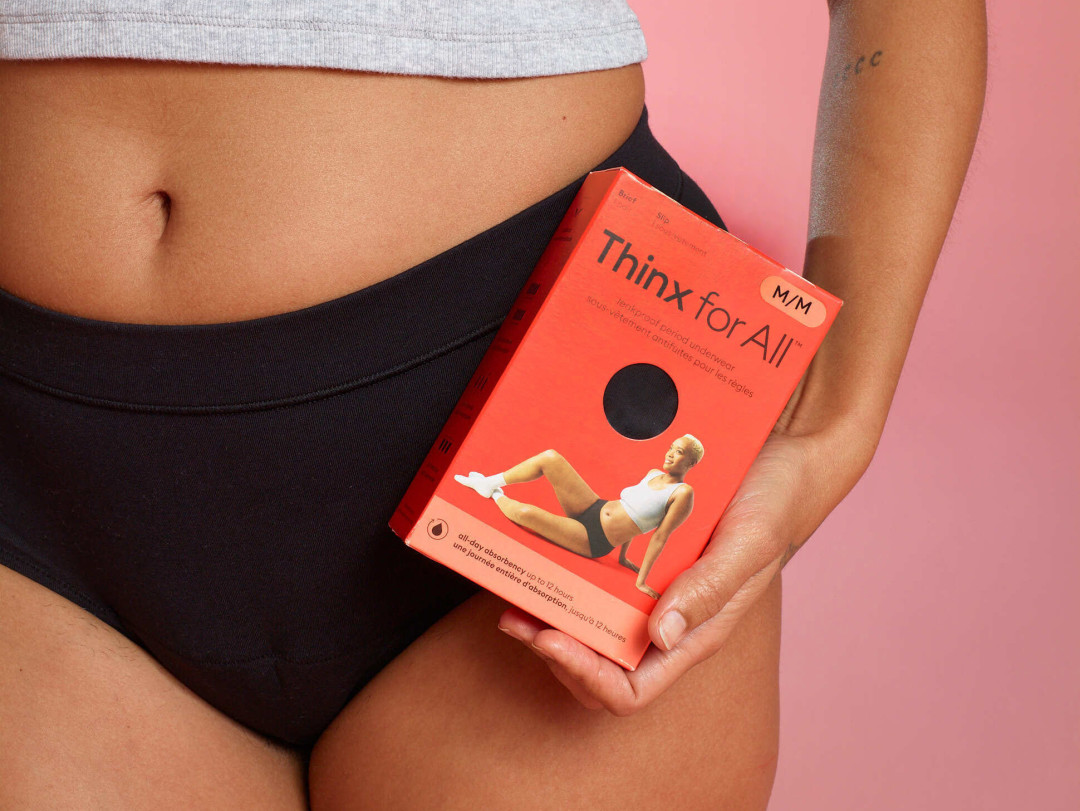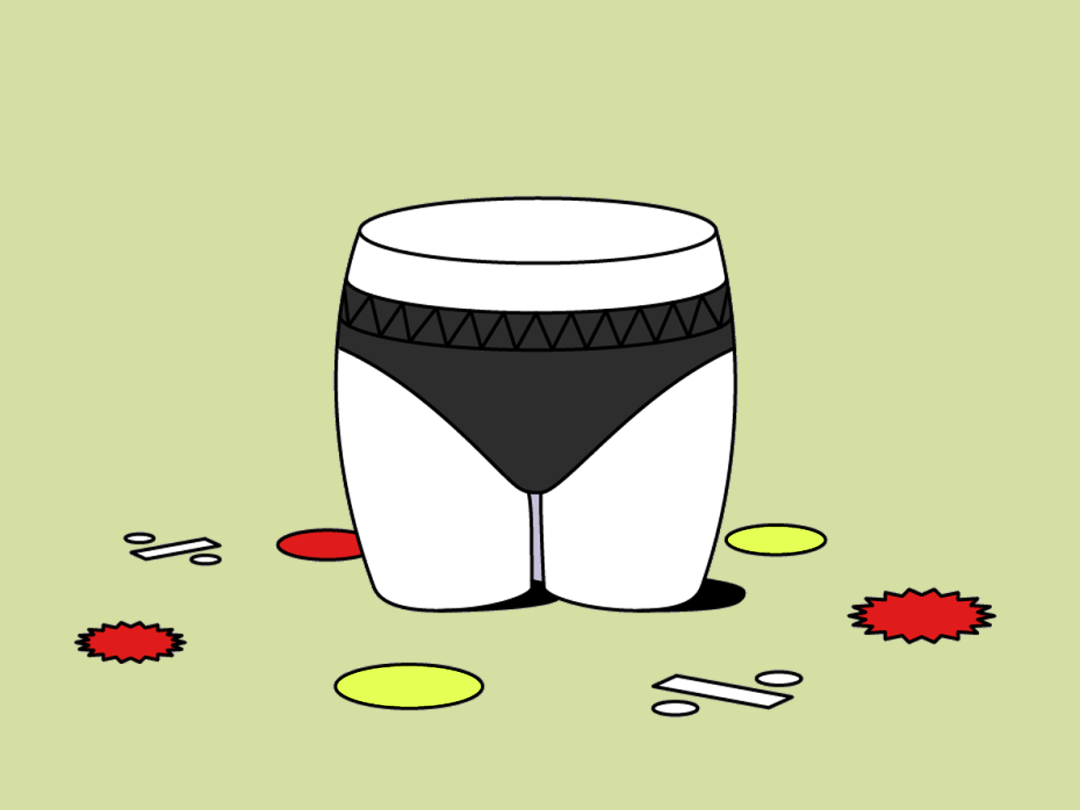#explainer
The Life Cycle of a Tampon
odds & ends
·5 min read

by Alexandra Wee | 04/25/2018
Time to talk trash.
It all starts in the field. No, not that *annoying* period commercial of a person slow-mo falling onto a bed of flowers. I’m talking about your tampons.
These tiny pluggers, often made from a blend of cotton and rayon, may seem fairly harmless. They go in, they super-soak, they come out. But did you know that the average tampon still carries trace amounts of dioxin, a byproduct from the creation of the synthetic fiber, rayon? That’s on top of any pesticides, like diuron, that may have been used to conventionally harvest the cotton. In fact, one person’s menstrual products for a single year leaves behind a carbon footprint of nearly 12 pounds of CO2.
And while some researchers say the amount of dioxin found in a single tampon is not exactly harmful to your health, others argue that considering the average menstruator uses up to 14,000 tampons in their lifetime, adverse health effects can certainly add up. Um, yeah, no thanks.
Once these little cloth cylinders have been shaped from a cotton-rayon blend, and sometimes additional synthetic fibers, the tampons are bleached a pristine white. And while certain bleaching methods, for both pads and tampons, using chlorine dioxide have been phased out over the years, the more commonly found “chlorine-free” label spotted on packaging today still isn’t closely regulated. In other words, though manufacturers may have eliminated certain bleaching toxins, nobody – not even the FDA – regulates or requires the full disclosure of what toxins may still be lurking in your tampons.
And what about those applicators?
Since the popularity of plastic applicators surpassed that of their cardboard counterparts in the late 90s, these easy-inserters are not only the most widely-used, but they’re also commonly found washed up along *gulp* our beaches. Even though most of these applicators are made from the same kind of plastic used in other recyclable plastics, like bottles, tampon applicators cannot be commercially recycled because they have come into contact with bodily fluids (sorry, fluids). And those individual wrappers? Your green bin can’t take them either. As a result, both these bad boys will likely end up in landfills or floating their way into the ocean. There, they will slowly break apart into microplastics that marine life risk mistaking as food.
According to research, one of the largest impacts on global warming is caused by the processing of low density polyethylene (LDPE), the same versatile plastic used to make everything from grocery bags and electrical wiring insulation to these popular applicators – even the little plastic strips on the back of pads and liners.
As for the actual tampons, after wrapping these babies up in a wad of toilet paper and tossing them into the trash, they won’t even begin to decompose until years after they end up in landfills. Not quite the history we want to be making.
But fear not, there’s still a lot you can do to protect your health and Mother Nature’s.
Here are a few ways to have a greener period:
1. Refuse and reuse – if you are able, nix tampons altogether and opt for a waste-free option like period panties, cloth pads, or menstrual cups.
2. Go organic – when you have the option, buy 100% organic, all-natural cotton tampons. These alternatives will keep you free from the harmful dyes, chemicals, and fragrances found in conventional tampons. Bonus points if you find options with cardboard applicators.
3. Support your supporters – stand behind rad women like Grace Meng and Carolyn Maloney, democratic representatives who have been fighting relentlessly to pass a bill requiring manufacturers to clearly list all ingredients used in their tampons, pads, and other menstrual products on product packaging.
How do you feel about what's in your tampons? Do you use any natural alternatives to traditional period products? Let us know in the comments!
Alexandra is a freelance writer who loves the planet as much as she loves dogs (so, a lot). Her work has appeared in Martha Stewart and Time Out New York. When she’s not writing, you can find her buying ugly produce at the farmer’s market or trying to do yoga.
by Alexandra Wee


